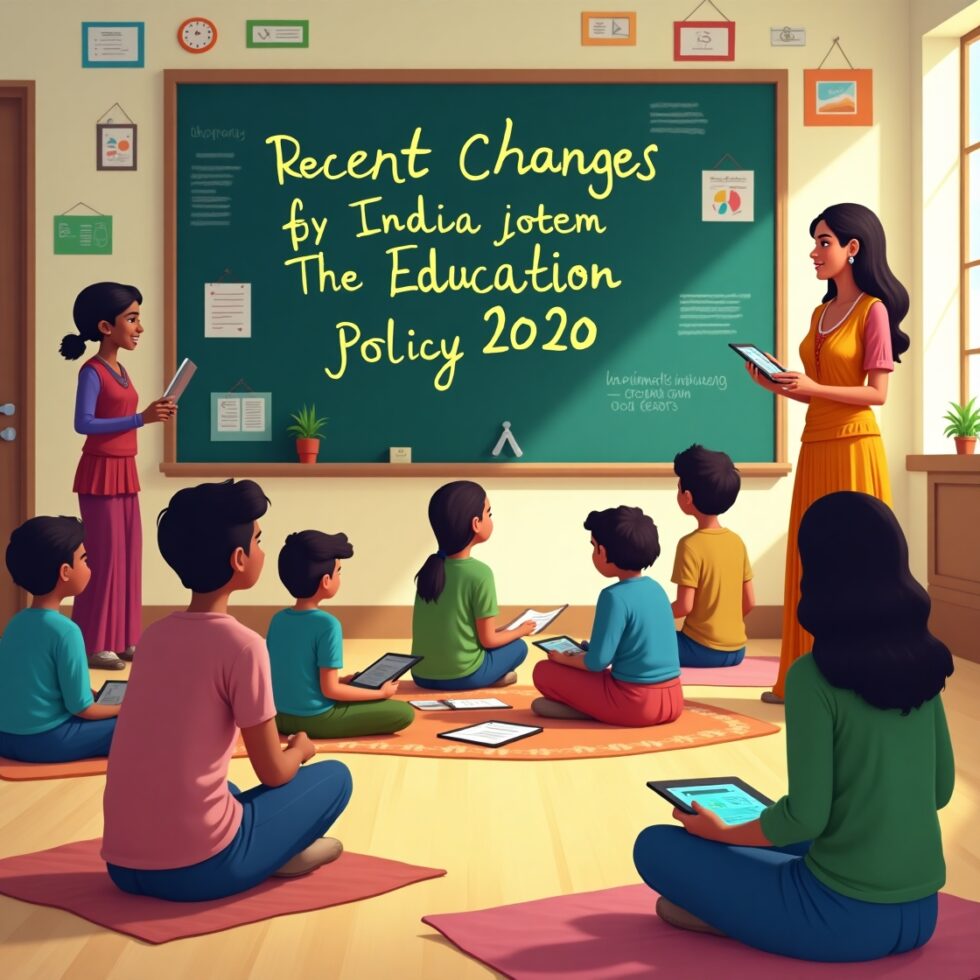
The education system in India has been a subject of extensive debate and reform over the years. With a diverse population and varying socio-economic backgrounds, the need for a robust and inclusive education system has never been more critical. Recent changes, particularly those introduced by the National Education Policy (NEP) 2020, mark a significant shift in how education is perceived and delivered in the country. This blog delves into the key changes in India’s education system, their implications, and the future of learning in India.
The National Education Policy (NEP) 2020
One of the most transformative changes in the Indian education landscape is the introduction of the National Education Policy (NEP) 2020. This policy aims to overhaul the existing education framework and make it more relevant to the needs of the 21st century. Here are some of the key features of the NEP 2020:
-
New Curricular Structure: The NEP introduces a new curricular structure known as the National Curriculum Framework (NCF), which replaces the traditional 10+2 system with a more flexible 5+3+3+4 system. This structure aligns with the developmental stages of children, focusing on foundational literacy and numeracy in the early years.
-
Emphasis on Vocational Education: Recognizing the importance of skill development, the NEP encourages the integration of vocational education into mainstream schooling. This initiative aims to equip students with practical skills that enhance their employability and prepare them for the workforce.
-
Multilingual Education: The NEP promotes multilingualism, encouraging students to learn in their mother tongue while also being proficient in English and other languages. This approach not only preserves linguistic diversity but also enhances cognitive abilities and cultural understanding.
-
Holistic and Multidisciplinary Approach: The policy advocates for a holistic education that goes beyond rote learning. It emphasizes critical thinking, creativity, and problem-solving skills, preparing students to navigate complex real-world challenges.
-
Higher Education Reforms: The NEP also proposes significant changes in higher education, including the establishment of Multidisciplinary Education and Research Universities (MERUs) and the introduction of a Higher Education Commission of India (HECI) to oversee and regulate higher education institutions.
The Rise of Digital Learning
The COVID-19 pandemic has accelerated the adoption of digital learning in India. With schools and colleges forced to close, educators and students turned to online platforms for teaching and learning. This shift has highlighted both the potential and the challenges of digital education.
-
Increased Accessibility: Digital learning has made education more accessible, especially for students in remote areas. Online resources, e-books, and virtual classrooms have opened up new avenues for learning that were previously unavailable.
-
Blended Learning Models: The pandemic has led to the emergence of blended learning models, combining traditional classroom instruction with online learning. This hybrid approach allows for greater flexibility and personalization in education.
-
Challenges of Digital Divide: While digital learning has its advantages, it has also exposed the digital divide in India. Many students, particularly in rural areas, lack access to reliable internet and digital devices. Addressing this gap is crucial to ensure that all students benefit from the advancements in technology.
Focus on Mental Health and Well-being
In recent years, there has been a growing recognition of the importance of mental health and well-being in education. The NEP emphasizes the need for schools to provide a supportive environment that fosters emotional and psychological well-being. Initiatives such as counseling services, stress management programs, and awareness campaigns are being introduced to help students cope with academic pressures and personal challenges.
The Role of Teachers
Teachers play a pivotal role in the successful implementation of these changes. The NEP emphasizes the need for continuous professional development and training for educators. By equipping teachers with the necessary skills and knowledge, the education system can ensure that they are well-prepared to adapt to new teaching methodologies and technologies.
Conclusion
The changes in India’s education system reflect a commitment to creating a more inclusive, flexible, and relevant framework for learning. The NEP 2020, along with the rise of digital learning, presents an opportunity to transform education in India, making it more accessible and aligned with the needs of the modern world. However, challenges such as the digital divide and the need for teacher training must be addressed to ensure that these reforms benefit all students. As India moves forward, the focus should remain on fostering a culture of lifelong learning, critical thinking, and innovation, preparing the next generation for the challenges and opportunities that lie ahead.



